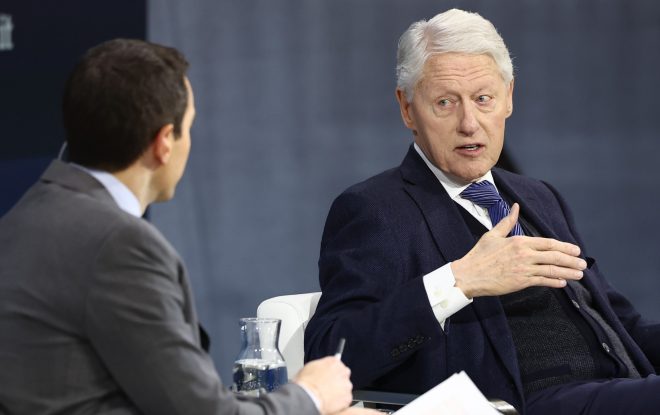Intel CEO Forced Out by Board Frustrated With Slow Progress
(Bloomberg) — Intel Corp. Chief Executive Officer Pat Gelsinger was forced out after the board lost confidence in his plans to turn around the iconic chipmaker, adding to turmoil at one of the pioneers of the technology industry.
Most Read from Bloomberg
The clash came to a head last week when Gelsinger met with the board about the company’s progress on winning back market share and narrowing the gap with Nvidia Corp., according to people familiar with the matter. He was given the option to retire or be removed, and chose to announce the end of his career at Intel, said the people, who asked not to be identified because the proceedings weren’t made public.
Intel Chief Financial Officer David Zinsner and Executive Vice President Michelle Johnston Holthaus are serving as interim co-CEOs while the board searches for Gelsinger’s replacement, the company said in a statement. Frank Yeary, independent chair of the board of Intel, will serve as interim executive chair.
Gelsinger, 63, was once hailed as a savior of the chip giant. After taking the reins three years ago, he professed his love for the company and said he was determined to restore it to preeminence in the semiconductor industry. The executive first began working at Intel when he was a teenager but left in 2009 and became CEO of VMware Inc. Upon returning in 2021, he promised to regain the chipmaker’s lead in manufacturing — something it had lost to rivals like Taiwan Semiconductor Manufacturing Co.
Gelsinger couldn’t immediately be reached for comment.
Intel investors, eager to see changes at the company, applauded the CEO’s departure. The shares gained as much as 6% in New York on Monday, though they remain down about 50% this year.
Gelsinger set out to take Intel beyond its traditional strength in personal computer and server processors by expanding into making chips for other companies — something it had never done before and putting it into direct competition with TSMC and Samsung Electronics Co. As part of his revival strategy, Gelsinger laid out a costly plan to expand Intel’s factory network. That included building a massive new complex in Ohio, a project for which the company received federal aid from the Chips and Science Act.
Whoever replaces Gelsinger will face the same set of problems he was brought in to fix, including the fallout from poor decisions made by his predecessors. What would have once been the most desirable job in the $500 billion chip industry has become a nearly untenable position. The next CEO has to take on competitors with greater resources and catch up in AI computing, all while showing that Intel can be the groundbreaking company it once was.





Leave a Reply